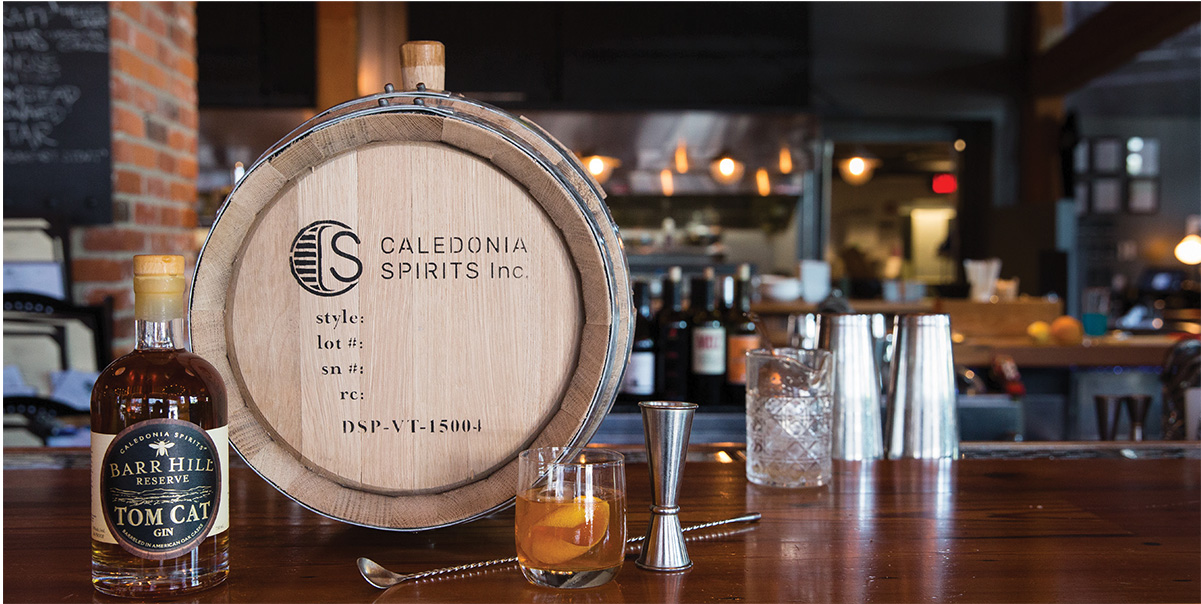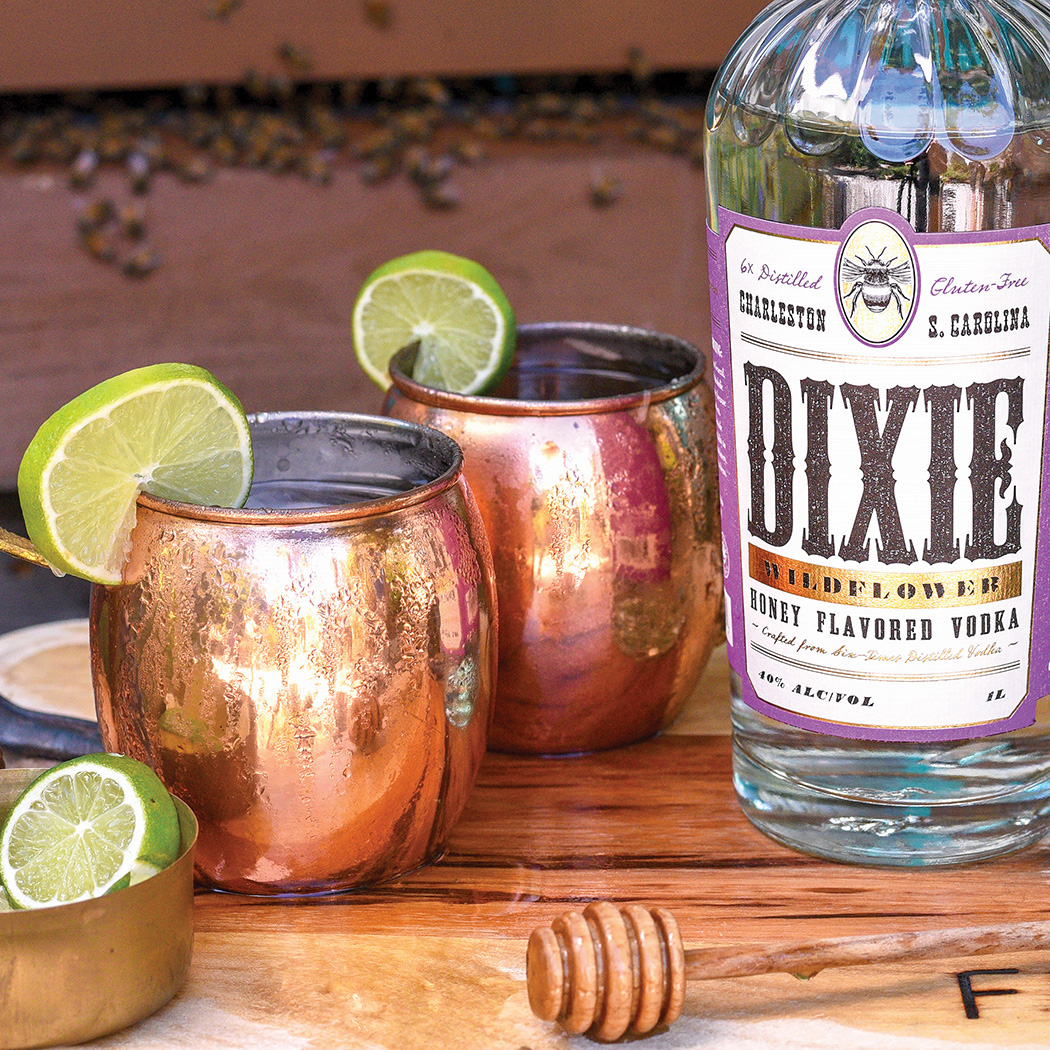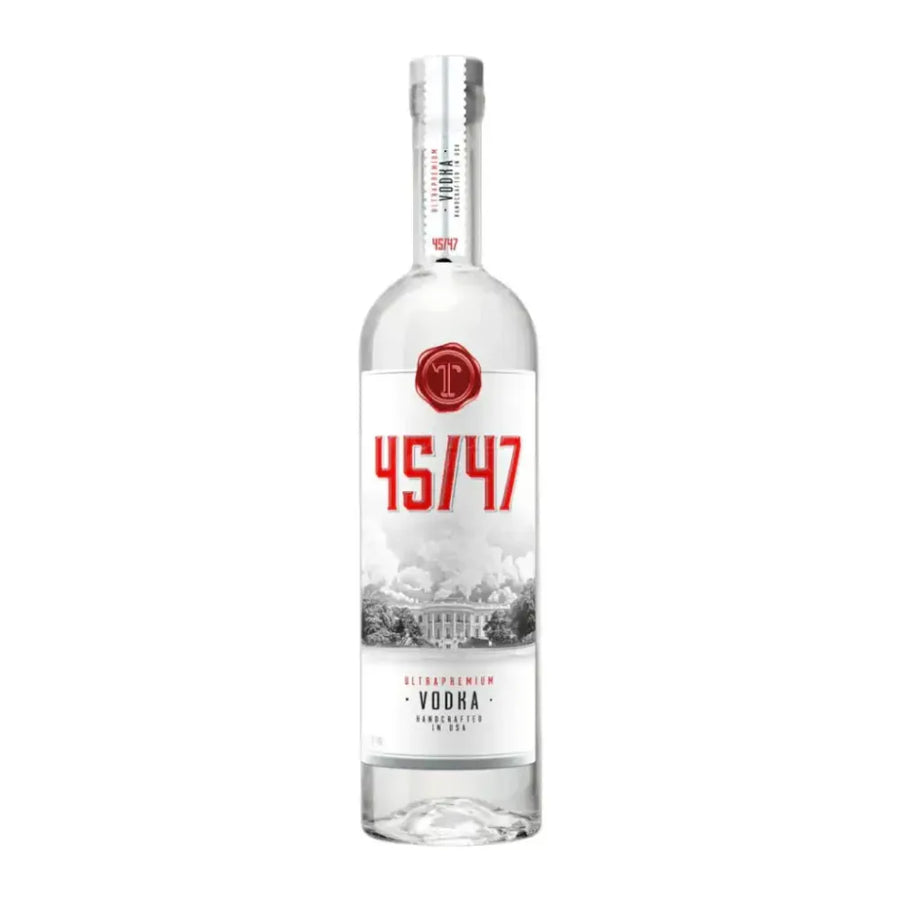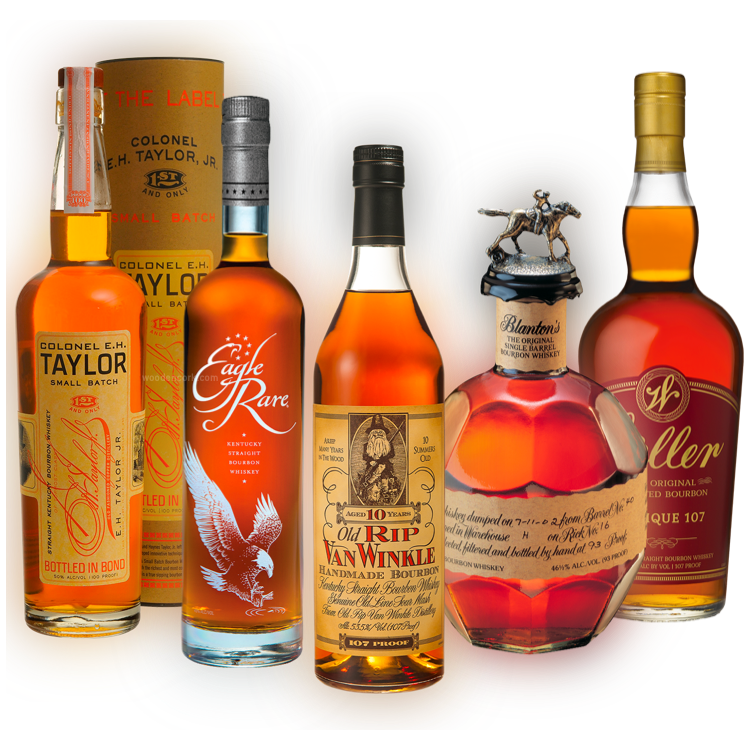Exploring Vodka’s Diversity in 2019
It takes more for a vodka brand to shine nowadays.
“The vodka category is extremely competitive right now, for domestic and imported, and brands are focused on protecting their market share,” says Nicolas Guillant, president of Marie Brizard Wines & Spirits, exclusive importer and owner of Sobieski vodka. “Only brands that are real and differentiated will manage to grow.”
Competition is intense despite the vastness of the territory. Vodka is the largest spirits category, accounting for a whopping 32% of market volume, and $6.2 billion dollars in the U.S. alone, according to the Distilled Spirits Council.
Whether from small craft producers or international behemoths, vodka is reacting and marketing to a savvier public. Vodka is strutting its stuff in expressions that showcase the finer points of terroir, and others that point to the provenance of ingredients. Even in the flavor category, we see an increase in natural, nuanced flavors — a far cry from the confection-focused flavors of the past.
Brown spirits — especially whiskey and Cognac, as well as tequila — have made inroads against the most popular white spirit. However, bartenders and consumers are now waking up to the distinctions between vodkas, and are employing them more widely in cocktails, both on-premise and off.
Vodka is so huge that it may seem monolithic, but can be divided into imports, domestic and flavor subsegments. And there is plenty of overlap. (Most producers offer a line of flavors, for example.) Vodka is active at all price points, but sales have been paced by high-end premium products, with revenue growth of more than 15% to $1.6 billion.
“Consumers are simply drinking better,” says Jim Ruane, brand director for Ketel One Vodka at Diageo North America. “There’s been a tectonic shift in how they’re approaching their food and drink choices—in a more thoughtful and considered manner, with a greater focus on how they treat their bodies, ingredients and the value systems of the brands they support.”
“Product quality is more paramount and broadly defined than ever,” Ruane adds. “Brands who recognize and leverage this are the brands who are winning—whether imported or domestic.”

Imports Evolve
It used to be that imported vodka brands automatically possessed exotic cache and were considered luxury goods. Nowadays the term “imported” on the label is no longer persuasive enough on its own. Producers must communicate clear, concise and compelling brand stories, while maintaining transparency about authenticity of origins and craft of production methods.
While imports fight for market share at all price points, many still aim for the super-premium shelf.
“The super-premium vodka category is driven by imported brands,” says Lee Applbaum, global chief marketing officer of Grey Goose Vodka, a brand which has been credited for creating that niche. “However, there’s no denying that domestic brands playing in the premium space have put pressure on super-premium vodka as a whole.”
Strategies for imported vodkas include emphasizing country of origin, as well as provenance of ingredients. This white spirit originated in Eastern Europe, but vodka is now produced all over the world. For example, Beam Suntory recently launched the Japanese Vodka Haku, distilled in Kagoshima, Kyushu; the spirit is made from 100% Japanese white rice and filtered through bamboo charcoal.
Show Your Passport
How important is the country of origin to American vodka consumers? That depends on whom you talk to.
“Country of origin plays less of a role than it once did with consumers,” says Jason Schladenhauffen, president and CEO of 375 Park Avenue Spirits, whose portfolio includes the Netherlands-based Van Gogh Vodka. “But we still feel it’s important to stress our provenance, given the incredible reputation vodkas from Holland have built over the years.”
“Country of origin does play a factor when it comes to vodka,” says Carlos Zepeda, vice president for Belvedere U.S. That Belvedere Vodka is first and foremost a Polish Vodka shines through in its brand story and consumer education, Zepeda says. He notes that Poland is the only country that has a vodka appellation that requires all ingredients to be grown, sourced and bottled in Poland without additives.
“Although the place of production is not the primary purchase criteria, U.S. consumers associate Poland with vodka mastery and expertise,” adds Guillant. Sobieski’s Polish origins play an important part in its brand story.
“Country of origin is important when discussing our field-to-bottle process,” says Applbaum. “Consumers want to understand the provenance of a product’s ingredients. Additionally, France produces an incredible variety of luxury products, so our French identity reinforces Grey Goose’s aspirational stature.”
“While the brand’s Swedish origin is not a focus of the Svedka story, we recognize that it is a proof point that resonates with consumers,” says Carl Evans, vice president, spirits for Constellation Brands.
The American Legions
The vodka category didn’t make its mark on the American drinks scene until the 1950s, when Smirnoff and other imports hit the market. The spirit has made up for lost time.
Smirnoff is now made in America, along with other established names like Skyy, Burnett’s and Seagram’s. And brands like Tito’s and the proliferation of craft producers have changed the face of U.S. vodka.
“Traditionally, whiskey and rum had dominated the American spirits market,” says Umberto Luchini, proprietor of Blood x Sweat x Tears Vodka, a craft producer in Eugene, Oregon. “These days, vodka has been selling almost as much as those spirits combined, a clear sign that something within the American consciousness has changed.”
Key drivers of this change are wrapped around the wave of patriotism that has developed since the early 2000s, he adds. “The buy-American impulse is helping sales of domestic vodkas, coupled with the popularity of marketing terms like local and craft.”
But do American consumers perceive a difference between domestic and imported vodkas? “If you had asked us this question about 10 years ago, we’d say no,” says Frank Polley, vice president of trade marketing at Tito’s Handmade Vodka. “But over the last few years, we’ve seen a shift with American consumers rallying behind American-made vodkas and shifting away from some of the larger imported vodkas.”
This trend isn’t just seen in vodka but across many categories and industries, he adds. “American consumers continue to support American-made, well-crafted products to which they have a connection.”
Domestic vodkas are as diverse as the vast American continent, drawing upon the varied terrain and climate as well as the country’s agricultural bounty. There is no such thing as an American style of vodka. However, quite a few brands have discovered that the label “Made in the USA” resonates with consumers.
Patriotism Appeal
Perhaps the highest profile example is American Anthem Vodka, launched last year by Diageo. As the name implies, American Anthem Vodka boasts a strong connection to flag and country. Indeed, the label incorporates the Stars and Stripes motif and also announces: “Proudly Made in America.”
And Skyy Vodka’s “Proudly American” marketing campaign juxtaposes famous phrases from American history, such as “Home of the Brave,” with imagery featuring people who celebrate diversity.
“Country of origin is important to American consumers, especially vodkas made in the USA,” says Marcel Durand, Infinium Spirits’ vice president of marketing. “We definitely position Seagram’s as an All American brand.”
A Sense of Place
Many vodka producers are much more specific than mere country of origin. For them, local is specific and tangible. “Our brand story stems from our proud Austin, Texas roots,” notes Polley about Tito’s. Deep Eddy Vodka also celebrates its Austin roots and Texas sunshine.
So do other brands tap into their provenance.
“While we have yet to state ‘American-made’ on our packaging or heavily in marketing campaigns, we do put an emphasis on being ‘Landcrafted in the heart of Vermont’,” explains Ryan Christiansen, president and head distiller at Caledonia Spirits, producer of Barr Hill Vodka. “For us, working with local farmers, coopers and craftsman to produce our spirits, and then bringing them to market via our network of distributors, sales reps and wonderful customers throughout the country is as American-made as it gets.”

“Our slogan is ‘Made in America, Raised in the South.’ The American story is critical, but our Southern origin is what gives us purpose and a reason to exist in the marketplace,” says Matti Christian Anttila, founder and CEO of Grain & Barrel Spirits in Charleston, S.C., and owner of Dixie Vodka. “Our goal is to highlight the amazing craft renaissance taking place in the South today. It’s a national trend, but each region is different. In today’s market I think consumers think much more locally and regionally than they have in the past. A good analogy is barbecue. It’s a very American trend, but with clear regional differentiation.”
Similarly, craft producer Blood x Sweat x Tears Vodka pursues a “farm-to-bottle” philosophy, sourcing all of its winter wheat in the Pacific Northwest and using water from the Cascade Mountains.
The French brand Grey Goose focuses on the Picardy region, known as the breadbasket of France, for producing exceptional quality wheat that goes into the country’s finest breads and pastries. Grey Goose is made from soft winter wheat grown there, and the water comes from a dedicated well in the Gensac-la-Pallue commune in Cognac. The vodka is distilled only once, ensuring that the character of the ingredients shine through, says Applbaum.
Vodka has truly taken up the winemaking notion of terroir.
“For our flagship 80-proof Van Gogh Vodka, we also focus on the unique terroir characteristics the three wheat sources bring to the blend,” says Schladenhauffen.
“In the past year, Belvedere Vodka has focused on the concept of terroir in vodka,” says Zepeda. This idea is demonstrated in Belvedere Vodka’s Single Estate Rye Series, the first of which were launched last year. The brand worked with eight farms in two distinctive areas — Smogóry Forest and Lake Bartek — to illustrate the variation of terroir on Dankowskie Diamond rye.
The aim is to debunk the notion that vodka should be tasteless and odorless and show how complex the spirit can be. “When tasted side by side, the two new vodkas deliver demonstrably different taste profiles,” says Zepeda.
Marketing the Making
Vodka can and is made from just about anything fermentable. Potatoes are traditional. Many types of vodka are grain-based, wheat, rye or corn. Several producers spotlight their ingredients to set their vodkas apart.
Sobieski is made of 100% rye grown in Poland. “This is our key point of differentiation,” says Guillant. “And rye is being hyped, benefiting from rye whiskey trend.”
“Like other craft movements, domestic vodka has gained widespread momentum by emphasizing unique American characteristics such as local grains and water sources,” says Andrew Mansinne, Till Vodka’s vice president of brands. “For Till Vodka, we’re proud to use 100% premium Kansas wheat sourced from the region surrounding our distillery in Atchison.”
Many American producers favor native corn as the vodka base, Tito’s, Deep Eddy and Dixie, for example.
“The ingredient story has become a bigger part of our messaging recently,” says Ruane. Ketel One makes the point that it is crafted from 100% non-GMO grains.
Vermont-based Barr Hill Vodka is distilled entirely from raw honey from the Northeast. “The beekeepers’ work is what makes our vodka truly special,” explains Christiansen. “We never heat the honey prior to fermentation and we never distill more than twice—this preserves the wild yeast and rich aromatics of nectar, delivering the floral depth of wildflower fields straight to the glass.”
Each bottle is corked and sealed with beeswax to emphasize its origins.
Flavor Conundrum
The vodka category has always had an ambivalent attitude towards flavors. The so-called flavorless, odorless, colorless spirit seems like a natural vehicle for a variety of flavors. Traditional flavors of bison grass, pepper and horseradish were just the first in a long and ever-growing assortment.
The vodka industry’s focus on flavor is cyclic.
From the beginning, most producers augmented their original expression with a handful of flavors. Then came an avalanche of additions to some portfolios, largely sweet and often exotic, ranging from whipped cream, candy cane and wedding cake to smoked salmon and breakfast cereals. The proliferation overwhelmed consumers and burdened already crowded retail shelves.

At that point, most players reevaluated and pared down their portfolios to a core of bestsellers. Now it seems a new round of flavor introductions, or reintroductions, is in the works.
“Overall, the flavored vodka category is actually trending down 5.3%,” says Durand of Infinium Spirits. “When flavored vodkas were peaking, there was a large influx of flavored line extensions by many brands. In recent years, we’ve seen fewer flavors being introduced. When done right, individual flavored vodka innovations are still very successful.”
Seagram’s recently introduced Tropical Pineapple Vodka. The brand has eight flavors; watermelon, apple, peach and sweet tea are best sellers. “Innovation drives 70% + of our category growth and flavored vodkas play a large role in those innovation statistics,” says Durand, adding that Seagram’s plans a new flavor launch in summer 2019.
“After a few years of launching a wide variety and exotic flavors, brands are now refocusing on the core flavors answering consumer needs,” says Guillant of Marie Brizard, adding that five top flavors represent more than 40% of flavored vodka sales. Sobieski currently focuses on four flavours: Orange, Cytron, Vanilla and Raspberry.
“Flavor lifecycles are constantly evolving and shorter than ever before,” says Evans at Constellation. “Brands built on flavors alone have tended to struggle as consumer preferences shift. We have been fortunate as our commitment to innovation continues to work hard for us.” Svedka’s portfolio includes 15 flavors, along with Svedka 100-proof. Current best sellers are Blue Raspberry, Strawberry Lemonade and Mango Pineapple.
Dixie just launched its Wildflower Honey flavor. “We’ll continue to look at partnership opportunities on the ingredient side, but we think about flavors very strategically,” says Anttila. “Our goal is always to keep our core Southern Vodka at 80%+ of our mix.”
Flavor Comeback?
“Flavors are making a comeback,” says Zepeda of Belvedere. “However, consumers want fresh and natural ingredients including fruit peels, and real juice.”
Belvedere uses fresh ingredients in its latest introduction, Ginger Zest, which has been the most successful flavor from the brand to date. There are currently six flavors in the portfolio including Ginger Zest, Peach Nectar, Wild Berry, Mango Passion, Pink Grapefruit, and Citrus.
At Grey Goose, Applbaum agrees that flavors are on the upturn.
“But it’s not the sweet, confectionary flavors that people usually think of,” he says. “Because consumers are becoming more and more health-conscious, naturally flavored, super-premium vodkas are gaining traction at top bars and restaurants across the country.”
The company recently reintroduced its La Vanille flavor; it was taken off the shelf 15 years ago to focus on a core portfolio. “But in the past few years, vanilla has become a top selling flavor in the spirits category—growing by 40% year over year —so it was the perfect moment to bring it back to market,” says Applbaum.
Deep Eddy Vodka has built much of its reputation on flavors made with all-natural ingredients. The portfolio offers six flavors—Ruby Red, Lemon, Sweet Tea, Orange, Cranberry, and Peach, plus original, according to brand manager Terry Fagan.
New Directions?
Caledonia Spirits established its Experiments in Agricultural Rectification (E.A.R.) program as a way to work with unique ingredients from farms in New England. Barr Hill Vodka, distilled entirely from Vermont maple syrup, is the first to be released. Now Caledonia is experimenting with apples, aronia berries, elderberries, and burdock root, all grown on local farms.
Besides the naturally-infused Citroen and Oranje, Ketel One recently introduced a new branch, called Ketel One Botanicals. At a lower ABV (30%) and 73 calories per serving, the lineup right now consists of three varietals (not flavors, according to Ruane): Peach & Orange Blossom, Cucumber & Mint, and Grapefruit & Rose.
Tito’s, however, is adamant about not offering flavors. “When we look at the vodka category as a whole in 2019, we believe that we’ll continue to see a shift away from flavored vodkas and more emphasis on base vodka using fresh ingredients to create cocktails,” says Polley.
Cocktail Correlation
“The craft movement has transformed cocktail creation into a true art-form,” says Schladenhauffen of 375 Park Avenue Spirits. “While other categories have likely benefited more, the vodka category has become more in vogue again as of late.”
“It has certainly helped as vodka continues to be a go-to cocktail base for many consumers, and the craft cocktail movement has certainly sparked further interest in mixology,” says Evans at Constellation, noting that Svedka is a brand used frequently for home entertaining.
“The craft cocktail movement has resulted in bartenders and consumers raising their game and making better drinks, with better products (regardless of category),” says Ruane at Ketel One. “And more people are being educated by bartenders and media that authenticity, heritage and high-quality ingredients are things you should care about in a cocktail experience.”
Agrees Zepeda, “We’re starting to see top bartenders reevaluate high-quality vodkas and the role they can play in making great-tasting cocktails. Where once they may have considered vodka an easy option as a cocktail base, some bartenders are beginning to see the purity and subtlety of, particularly, super-premium vodka, as an opportunity to demonstrate their highly honed cocktail-making skills.”
Thomas Henry Strenk is a Brooklyn-based freelance writer with over 20 years experience covering the beverage and restaurant industries. In his small apartment-turned-alchemist-den, he homebrews beer kombucha, and concocts his own bitters and infusions. Read his recent piece American Brandy Emerges With Unique Style.
The post Exploring Vodka's Diversity in 2019 first appeared on Beverage Dynamics.




